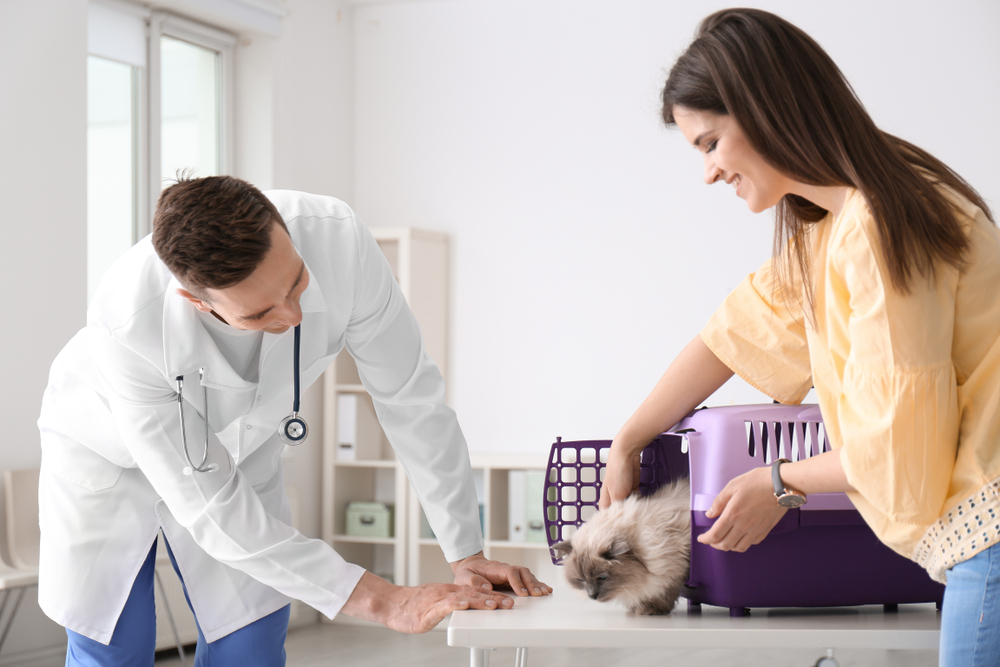Cats are notorious for marching to the beat of their own drum. Their secretive nature, comical quirks, and keen senses make them endlessly entertaining—but their unusual predisposition for some health conditions makes them vulnerable to serious, sometimes life-threatening harm.
Hepatic lipidosis, a dangerous liver condition that occurs when cats go too long without food, is one of these health conditions. Like cats themselves, this condition is sly and often hides below the surface until the damage is done.
Don’t let hepatic lipidosis sneak up on you and your feline—learn what you need to know in this guide from Neighborhood Veterinary Centers.
What happens during hepatic lipidosis in cats?
Hepatic lipidosis (i.e., fatty liver disease) is a distinctively feline condition that occurs when cats stop eating for a prolonged period—usually three to four days—and the cat’s body mobilizes fat (i.e., triglycerides) from other body areas for the liver to metabolize and use as energy. But, in the liver, the excess fat is continuously stored in the liver cells (i.e., hepatocytes), until an overwhelming number of cells are filled with fat, and the cat’s normal liver function is compromised. Without prompt treatment, hepatic lipidosis leads to acute and irreversible liver failure.
What causes hepatic lipidosis in cats?
Hepatic lipidosis still baffles many veterinary feline health experts. The problem can occur at any age or stage of health, although in 90% of cats, the condition is preceded by another—potentially undiagnosed—disease, such as:
- Obesity
- Kidney disease
- Diabetes
- Cancer
- Hyperthyroidism
- Pancreatitis
- Other liver conditions
Chronic stress or anxiety and undiagnosed pain can also cause appetite loss in cats, and could also potentially contribute to hepatic lipidosis.
What are hepatic lipidosis signs in cats?
Anorexia (i.e., complete appetite loss) or poor appetite for more than three to four days is considered the hallmark hepatic lipidosis sign. Unfortunately, many cats are already experiencing irreversible liver changes by this time. So, owners should pay attention to their cat’s normal eating habits and seek veterinary attention as soon as possible for appetite loss and related changes, such as:
- Hiding
- Food bowl avoidance
- Nausea (e.g., drooling near the food bowl or food)
- Jaundice or yellowing of the skin
- Extremely finicky behavior
Although the liver is a remarkably regenerative organ that can recover from injury, prompt and intensive veterinary care is essential for survival.
How is hepatic lipidosis treated in cats?
Cats with hepatic lipidosis generally require hospitalization for several days or more. Primary treatment goals include intravenous (IV) feeding with a nutrient-rich liquid and correcting hydration and electrolyte imbalances with IV fluids. Additional medications may be necessary to reduce nausea and support the liver. Nutritional therapy is continued until the liver regains function and clears the stored fat from cells. Because this can take as long as six or seven weeks, stabilized cats are set up with a feeding tube (i.e., a tube placed in the esophagus or stomach to allow controlled feedings) for at-home care.
Your veterinarian will also look for the underlying cause that likely triggered hepatic lipidosis. Although relapse is rare, diagnosing and controlling the primary condition is necessary to prevent future complications.
If your cat requires a feeding tube, the Neighborhood Veterinary Centers team will coach you on the frequency and amount you should feed your cat, as well as feeding tube care and maintenance. Your cat will need regular rechecks to ensure they make a steady recovery and regain their appetite at which time the tube can be removed.
How can I protect my cat from hepatic lipidosis?

In most cases, hepatic lipidosis occurs secondary to an underlying health condition. Therefore, the best way to prevent your cat from developing a fatty liver is staying up-to-date on routine wellness and preventive care services at Neighborhood Veterinary Centers. With regular examinations and testing, our veterinarians can identify and address unhealthy changes or disease in their earliest stages, long before they become a serious threat.
If you’re concerned about your cat’s appetite or behavior, or to schedule their wellness care appointment, contact Neighborhood Veterinary Centers.







Leave A Comment